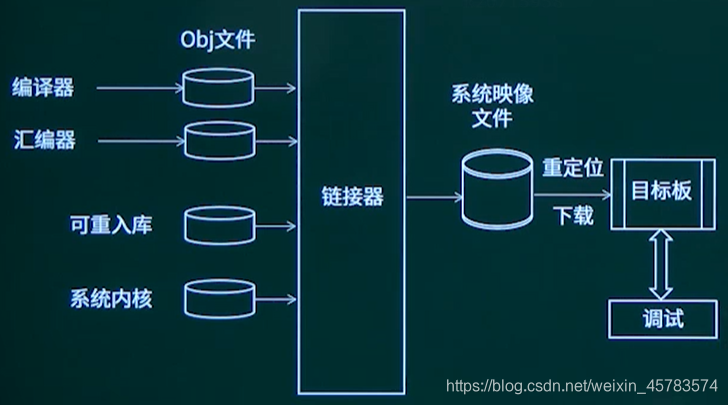嵌入式系统设计师学习笔记二十六:嵌入式软件程序设计①——嵌入式应用开发的过程
本文共 440 字,大约阅读时间需要 1 分钟。
嵌入式系统设计师学习笔记二十六:嵌入式软件程序设计①——嵌入式应用开发的过程
一个嵌入式应用项目的开发过程是一个硬件设计和软件设计的综合过程,一般而言要经历以下几个步骤:
①硬件的设计与实现 ②设备驱动软件的设计与实现 ③嵌入式操作系统的选择、移植,以及API接口函数的设计 ④支撑软件的设计与调试 ⑤应用程序的设计与调试 ⑥系统联调,样机交付应用程序的生产与加载

嵌入式软件开发有如下几个特点
①需要交叉编译工具
②通过仿真手段进行调试 ③开发板是中间目标机 ④可利用的资源有限 ⑤需要和硬件打交道嵌入式软件开发的挑战
①软硬件协同设计
②嵌入式操作系统 ③代码优化 ④有限的I/O功能嵌入式系统开发的最大特点:软硬件综合开发。
嵌入式产品是软硬件的结合体。 软件针对硬件开发、固化,不能进行任意修改。
嵌入式软件开发模式通常包括三种:
①本机开发
②交叉开发 ③模拟开发交叉编译:
在宿主机上必须采用交叉编译器来生成目标机的可执行代码。
嵌入式软件开发流程

下载与运行

转载地址:http://ntxpz.baihongyu.com/
你可能感兴趣的文章
netty解决tcp粘包和拆包问题
查看>>
Netty速成:基础+入门+中级+高级+源码架构+行业应用
查看>>
Netty遇到TCP发送缓冲区满了 写半包操作该如何处理
查看>>
netty(1):NIO 基础之三大组件和ByteBuffer
查看>>
Netty:ChannelPipeline和ChannelHandler为什么会鬼混在一起?
查看>>
Netty:原理架构解析
查看>>
Network Dissection:Quantifying Interpretability of Deep Visual Representations(深层视觉表征的量化解释)
查看>>
Network Sniffer and Connection Analyzer
查看>>
Network 灰鸽宝典【目录】
查看>>
Network-Emulator Network-Emulator-Toolkit网络模拟器使用
查看>>
Networkx写入Shape文件
查看>>
NetworkX系列教程(11)-graph和其他数据格式转换
查看>>
Networkx读取军械调查-ITN综合传输网络?/读取GML文件
查看>>
NetworkX:是否为每个节点添加超链接?
查看>>
network小学习
查看>>
Netwox网络工具使用详解
查看>>
Net与Flex入门
查看>>
Net任意String格式转换为DateTime类型
查看>>
net包之IPConn
查看>>
net发布的dll方法和类显示注释信息(字段说明信息)[图解]
查看>>